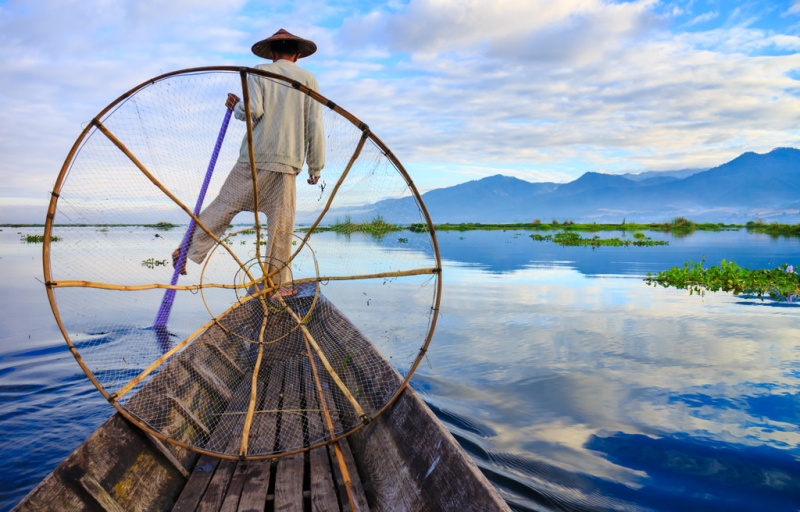
Myanmar (formerly known as Burma) is one of the most mysterious and little-explored countries in Southeast Asia. Due to the peculiarities of the political system (since 1962, the junta ruled here and only in 2012 the regime began to soften), for a long time Myanmar was either partially or completely closed to foreign tourists. As a result, Western culture has had almost no influence on the life of the Burmese, and in many parts of the country people continue to live the same way as fifty, or even a hundred years ago. In Shan State, where Inle Lake is located, this ancient way of life has largely been preserved. Local residents still practice the traditional occupations of their fathers and grandfathers – fishing, weaving and gardening, and life flows so slowly and measuredly that only thanks to satellite dishes and motor boats one can understand that this is the 21st century.
I want to go to Myanmar!
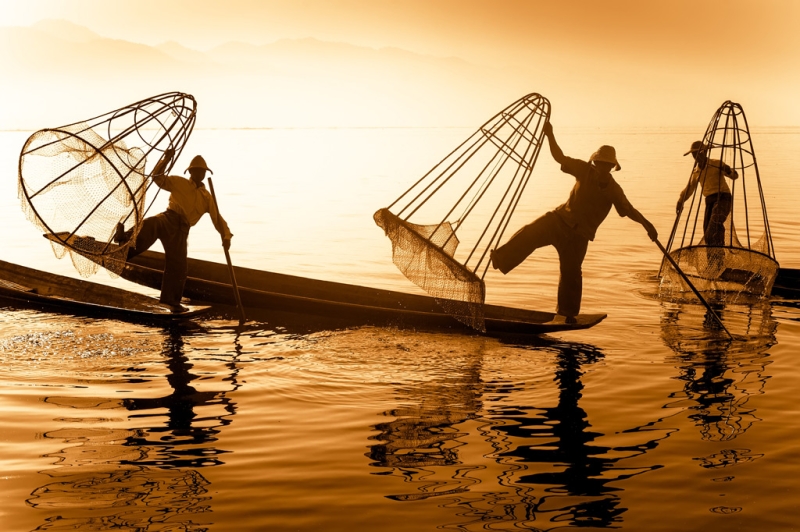
Immediately upon arrival at Inle, it becomes obvious why the lake has received the status of the second most important attraction in Myanmar (after the pagodas of Bagan). Surrounded by mountains and covered with green islands, Inle makes a strong impression. Add to this the fishermen in traditional boats (which are supposed to be rowed with your feet),
many species of birds and Buddhist monasteries built right on the water, and you will get a completely unforgettable and exotic picture.
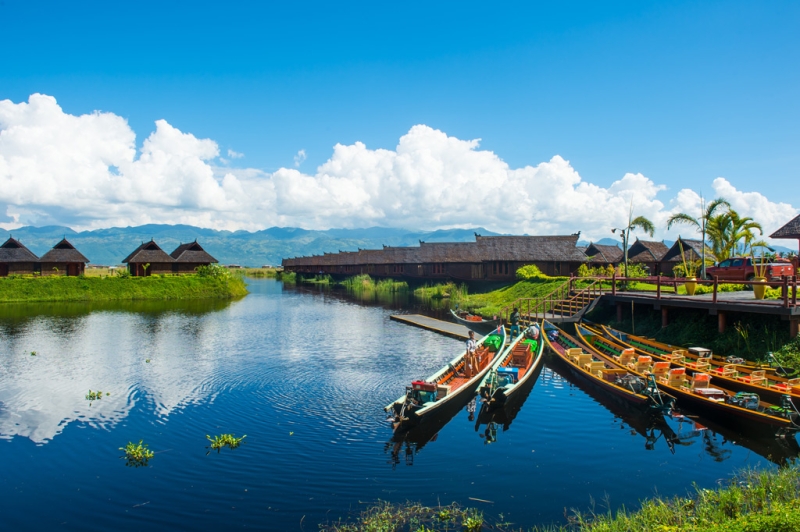
About 100 thousand representatives of the Intha people, which translates as “children of the lake,” live on the lake in 17 villages. It is believed that these people settled on the lake to escape the attacks of more warlike neighboring tribes.
Houses here are built right on the water, on stilts, and the streets between them are canals along which locals and tourists move by boat. Thanks to this canal system, the area around Inle Lake was called the Venice of Asia.
The Intha came up with a very original way to engage in agriculture without going ashore – when pieces of humus from rotted algae and roots of aquatic plants float to the surface, they are simply fixed in place with bamboo poles, and vegetables are grown on these peculiar islands and flowers.
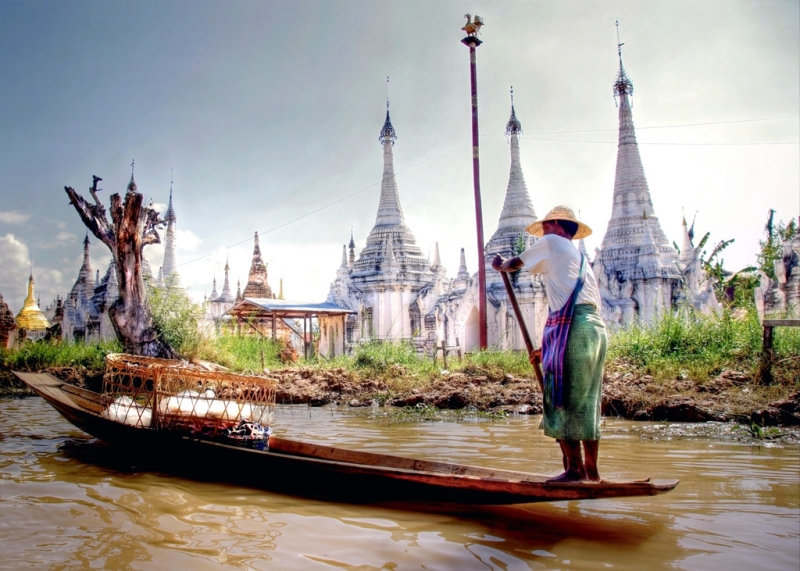
The Intha have been practicing Buddhism for several centuries, so on the lake itself and near it you will find many temples, monasteries and pagodas. Of greatest interest is Indein Hill, on which there are several hundred pagodas. The oldest of them were built in the 14th century, the bulk of the buildings date back to the 17th and 18th centuries. Many pagodas are in various stages of destruction, and some have already been reached by Burmese restorers, and now they are concrete towers covered with gold paint.
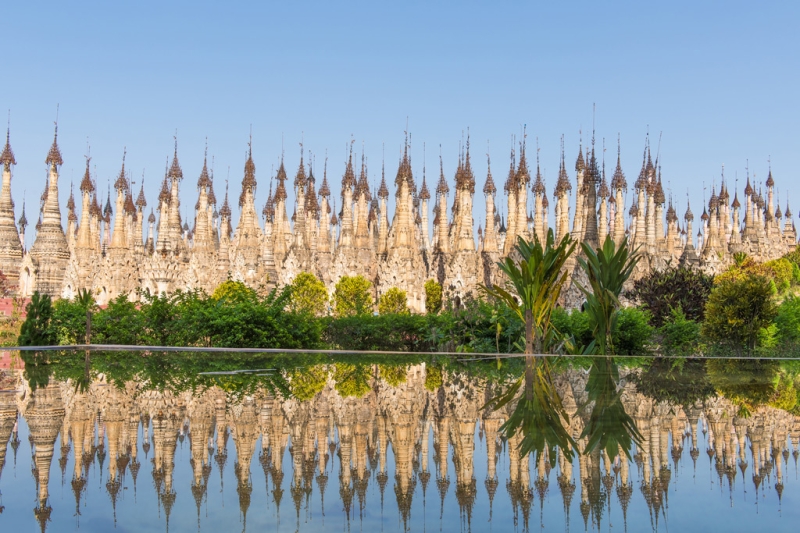
To get to Indein, you need to swim several kilometers along a long, narrow channel. Please note that in summer, when the lake becomes shallow, movement along the canal is impossible. And keep in mind that on the way from the pier to the hill you will have to overcome the local souvenir stall, and this is not an easy task – the Burmese are very persistent in their desire to sell something to tourists.
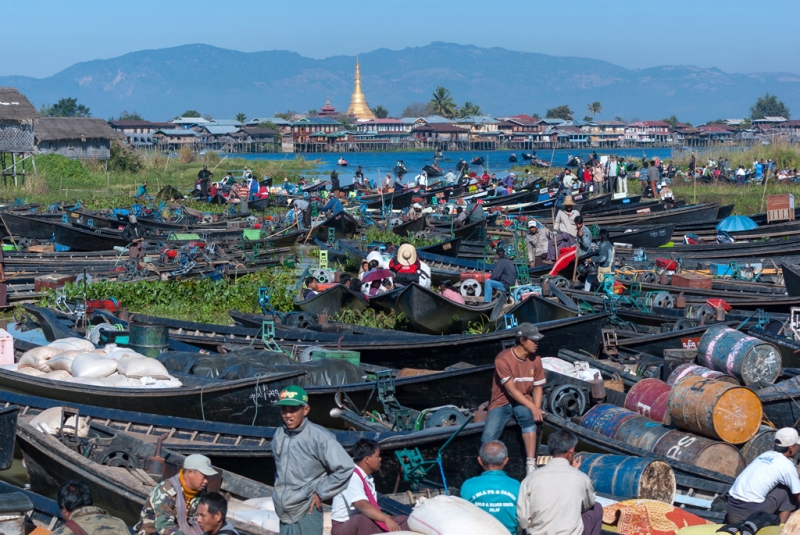
The largest temple on the lake, Phaung Do U Quang, is famous for its Buddha figurines – there are five of them. Locals claim that the figurines were brought to the lake from Bagan and that they can heal illnesses and make wishes come true. To express their respect to the five Buddhas, believers stick thin sheets of gold leaf on them, so the statues have long lost their original shape and look like fancy blocks of gold. It is said that monks periodically chop off pieces of gold covering from figurines – not to make money, but simply so that they can fit on the altar.
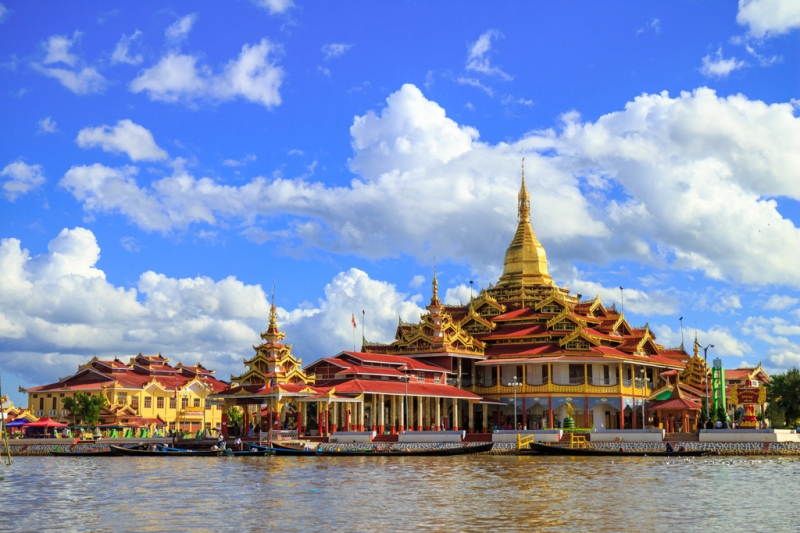
Like many other parts of the world, Inle Lake has a popular tourist attraction – visiting factories and workshops. On the lake they still weave fabric for sarongs and stoles, so the factories there are quite working. But the forging of swords and daggers and the production of jewelry here have long been focused exclusively on tourists. Household knives and scissors are made in the depths of Shan State, but this production is of no interest to foreigners.
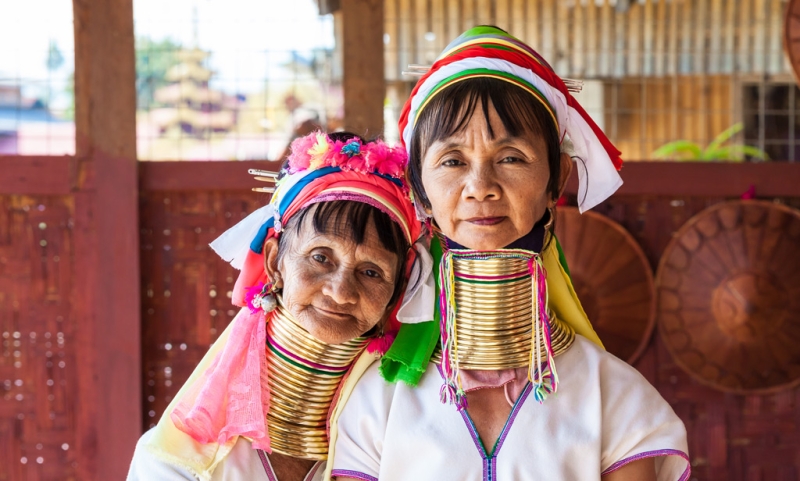
In the weaving factories you can meet Padaung women (and take photos with them for a small fee). These ladies are famous for wearing many heavy brass rings around their necks. From the age of five, girls begin to wear rings around their necks, increasing their number every year. As a result, their collarbones drop, their chests are compressed, and their necks appear unnaturally long. Contrary to prejudice, rings can be removed and this will not cause any problems with the spine. And today more and more women are doing just that, getting rid of jewelry forever.
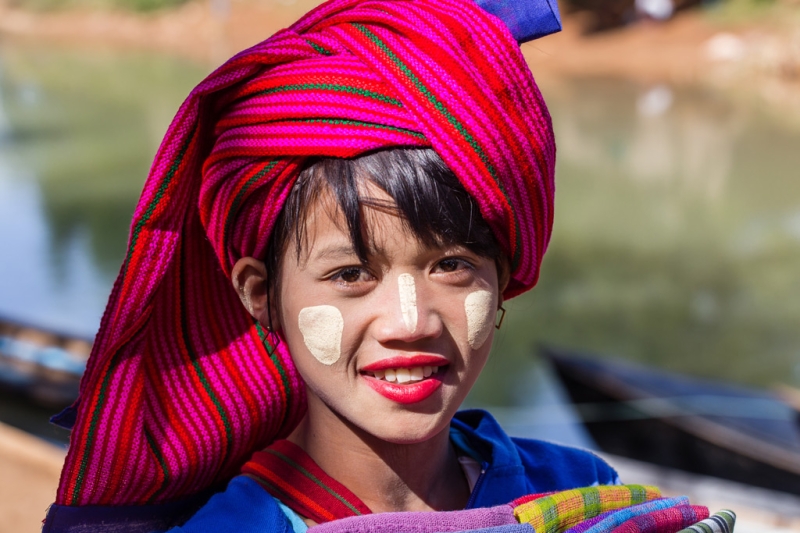
In general, Shan State is home to many different tribes and small nations, representatives of which can be seen at traditional floating markets on Inle Lake. They come to markets not only to trade various products and souvenirs, but also to take photographs with tourists for a fee. If you suddenly feel embarrassed that you came to the market to look at representatives of small nations, then we can reassure you – firstly, you yourself are of no less interest to them, and, secondly, for many of the village residents, photographing with tourists are the only way to earn money.
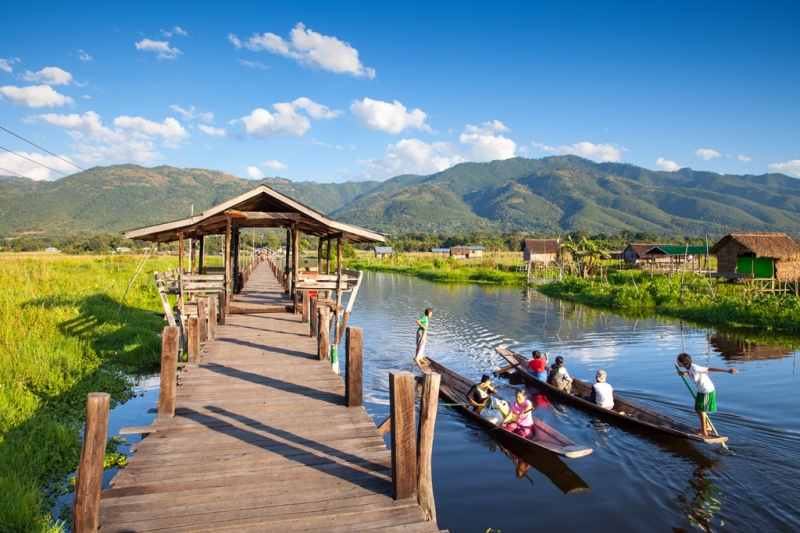
Every year more and more travelers from Europe and the USA come to Inle. Of course, conditions for tourists on the lake have improved significantly in recent years, but there are also disadvantages – traffic on the water is becoming busier, the lazy, relaxed atmosphere is disappearing, and prices are constantly rising. So, if you are interested in Inle Lake (and Myanmar in general),
We advise you not to put off your trip.
When traveling, pay for purchases with a OneTwoTrip loyalty card, and up to 10% of the order amount on OneTwoTrip, as well as up to 2% of any purchases paid for with the card, will be returned to your account.
Author: Anastasia Zakharova
You may be interested in:
Burma – 14 things you can only do here
5 exotic tribes you can visit
9 Secret Places in Southeast Asia

